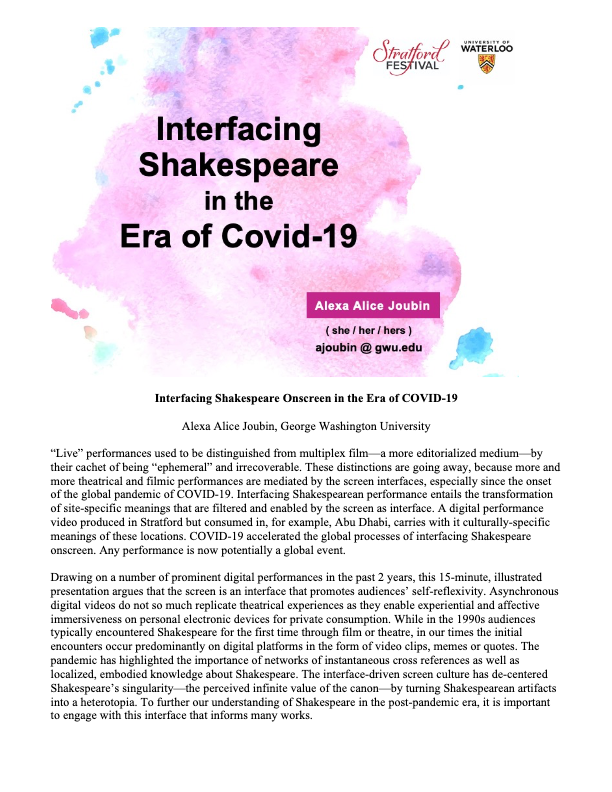Interfacing Shakespeare Onscreen in the Era of COVID-19
The Shakespearean Theatre Conference, Stratford Festival and University of Waterloo, Canada, June 15-18, 2022
“Live” performances used to be distinguished from multiplex film—a more editorialized medium—by their cachet of being “ephemeral” and irrecoverable. These distinctions are going away, because more and more theatrical and filmic performances are mediated by the screen interfaces, especially since the onset of the global pandemic of COVID-19.
Interfacing Shakespearean performance entails the transformation of site-specific meanings that are filtered and enabled by the screen as interface. A digital performance video produced in Stratford but consumed in, for example, Abu Dhabi, carries with it culturally-specific meanings of these locations.
COVID-19 accelerated the global processes of interfacing Shakespeare onscreen. Any performance is now potentially a global event.
Drawing on a number of prominent digital performances in the past 2 years, this 15-minute, illustrated presentation argues that the screen is an interface that promotes audiences’ self-reflexivity.
Asynchronous digital videos do not so much replicate theatrical experiences as they enable experiential and affective immersiveness on personal electronic devices for private consumption.
While in the 1990s audiences typically encountered Shakespeare for the first time through film or theatre, in our times the initial encounters occur predominantly on digital platforms in the form of video clips, memes or quotes. The pandemic has highlighted the importance of networks of instantaneous cross references as well as localized, embodied knowledge about Shakespeare. The interface-driven screen culture has de-centered Shakespeare’s singularity—the perceived infinite value of the canon—by turning Shakespearean artifacts into a heterotopia. To further our understanding of Shakespeare in the post-pandemic era, it is important to engage with this interface that informs many works.
